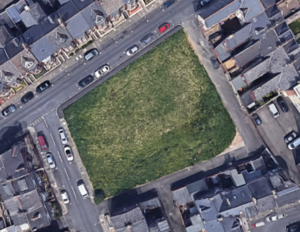Since urban spaces keep on to become denser, the significance of natural light access in residential and commercial developments cannot be overlooked. The notion of "Right to Light" has surfaced as a critical consideration for developers, homeowners, and urban planners together. With increased construction projects in downtown areas, comprehending how natural light impacts real estate is essential not only for adhering to regulations but also for encouraging harmonious relationships between new constructions and current properties.
Light rights surveys play a critical role in navigating the nuances of urban residing. These evaluations help evaluate the amount of sunlight that a property enjoys and how potential developments might impact this right. By comprehending the legal framework and historical context behind light rights in the UK, stakeholders can better predict challenges and avoid disputes, ensuring that both new builds and renovations meet legal standards while honoring the rights of neighboring properties. In this article, we will discuss various aspects of light rights considerations, providing information that are important for those involved in property development in today's market.

Grasping Light Rights
Right to light refers to the lawful right of a property owner to receive natural light through defined windows or openings. In the UK, this right is primarily founded on common law, which permits individuals to claim continuous light to their property if they have enjoyed it for a period of 20 years. This means that if a neighbor's construction blocks this light, they may have grounds to take judicial action. The concept reconciles the interests of developers and existing property owners, encouraging a harmonious urban environment while protecting individual property rights.
The importance of comprehending right to light lies in its implications for property development. When planning new buildings or extensions, developers must factor in how their projects could affect the light availability for adjacent properties. A oversight to take these factors into account can lead to conflicts, planning hold-ups, and costly legal challenges. Emphasizing https://telegra.ph/Assessing-Effects-Right-to-Light-Surveys-Clarified-04-23 to light assessments from the beginning ensures that developments meet legal standards while minimizing the likelihood of opposition from neighboring properties.
In dense urban areas, light rights issues often turn particularly complex. With limited space, taller buildings can easily obstruct light to existing properties, creating tensions between developers and local communities. As cities continue to progress, the right to light serves as a crucial topic for discussion in urban planning and development. Understanding these rights not only aids developers in navigating juridical challenges but also helps maintain the quality of life for residents who rely on natural light in their homes.
Judicial and Compliance Framework
The regulatory structure surrounding the right to sunlight in the UK is mainly rooted in the case law principles that have progressed over decades. It allows property owners to assert a entitlement to receive light through defined apertures. This right can be recognized after 20 years of continuous use or through express grants in property deeds. Comprehending these judicial principles is important for both developers and existing property owners as they navigate planning matters.
Compliance with entitlement to light regulations is critical to avoid litigious disputes and roadblocks in development projects. Developers must take proactive steps, such as conducting right to light evaluations, to determine the consequences of their projects on neighboring properties. If a development significantly obstructs light, it may lead not only to objections from affected neighbors but also to legal actions or lawsuits for damages. Therefore, awareness of compliance requirements ensures that all parties respect both judicial rights and development obligations.
In addressing right to light matters, seeking legal advice is strongly advised. Professional experts can help clarify the nuances of rights, potential infringements, and possible remedies. Recognizing Right To Light Addington between a planning approval and legal rights to light can be decisive for development success. By synchronizing development plans with regulatory standards, developers can lower risks and cultivate cooperative connections with neighboring property owners, ultimately facilitating smoother project completion.
Evaluation Process and Best Practices
Conducting a Light Access survey entails a structured approach to evaluate how proposed developments may affect the light enjoyed by adjacent buildings. The process typically begins with a comprehensive examination of the location, including the surrounding buildings, positions, and any existing light restrictions. Developing a solid understanding of existing light conditions is vital before advancing to the subsequent phases. This evaluation often employs cutting-edge modeling techniques and digital applications to represent light intensity and anticipate potential violations.
Once the preliminary site analysis is complete, a detailed Daylight and Sunlight Study is prepared. This document outlines the results of the evaluation, including any potential issues related to right to light. It is essential for interested entities to coordinate closely during this period to address any particular issues raised by neighbors or regulatory bodies. Additionally, adhering to BRE Recommendations ensures that the assessment aligns with industry norms and provides a reliable basis for evaluating the impact of construction projects on light availability.
Recommendations advise initiating Light Access assessments early in the planning stages. This preventive approach enables developers to identify potential litigation issues before they intensify into conflicts. Furthermore, maintaining open communication pathways with interested groups can promote negotiations and help avoid disagreements. Grasping and documenting the survey results not only helps in achieving development approval but also promotes a positive partnership between developers and the community, making sure that both entities are updated and secure.
